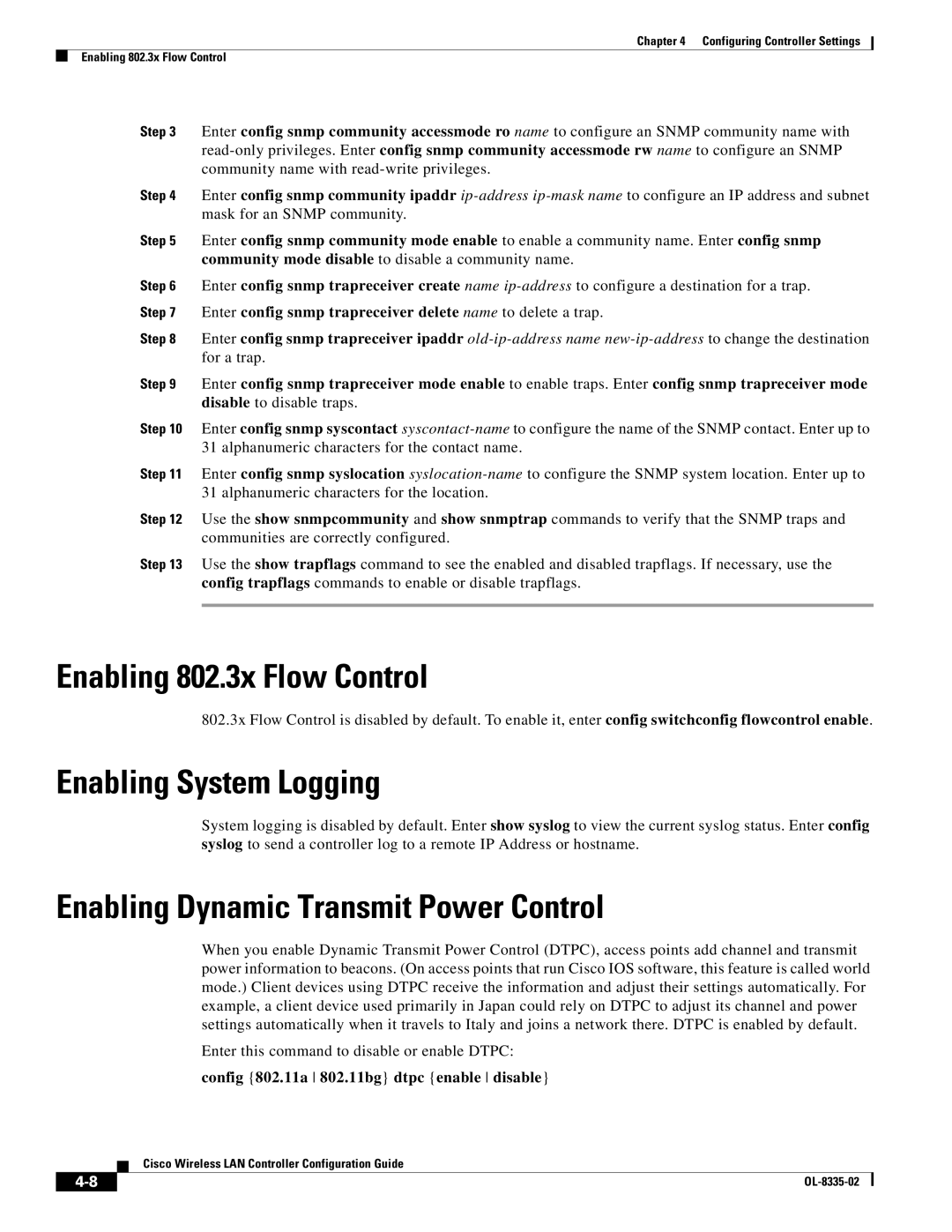
Chapter 4 Configuring Controller Settings
Enabling 802.3x Flow Control
Step 3 Enter config snmp community accessmode ro name to configure an SNMP community name with
Step 4 Enter config snmp community ipaddr
Step 5 Enter config snmp community mode enable to enable a community name. Enter config snmp community mode disable to disable a community name.
Step 6 Enter config snmp trapreceiver create name
Step 8 Enter config snmp trapreceiver ipaddr
Step 9 Enter config snmp trapreceiver mode enable to enable traps. Enter config snmp trapreceiver mode
disable to disable traps.
Step 10 Enter config snmp syscontact
Step 11 Enter config snmp syslocation
Step 12 Use the show snmpcommunity and show snmptrap commands to verify that the SNMP traps and communities are correctly configured.
Step 13 Use the show trapflags command to see the enabled and disabled trapflags. If necessary, use the config trapflags commands to enable or disable trapflags.
Enabling 802.3x Flow Control
802.3x Flow Control is disabled by default. To enable it, enter config switchconfig flowcontrol enable.
Enabling System Logging
System logging is disabled by default. Enter show syslog to view the current syslog status. Enter config syslog to send a controller log to a remote IP Address or hostname.
Enabling Dynamic Transmit Power Control
When you enable Dynamic Transmit Power Control (DTPC), access points add channel and transmit power information to beacons. (On access points that run Cisco IOS software, this feature is called world mode.) Client devices using DTPC receive the information and adjust their settings automatically. For example, a client device used primarily in Japan could rely on DTPC to adjust its channel and power settings automatically when it travels to Italy and joins a network there. DTPC is enabled by default.
Enter this command to disable or enable DTPC:
config {802.11a 802.11bg} dtpc {enable disable}
Cisco Wireless LAN Controller Configuration Guide
| ||
|
